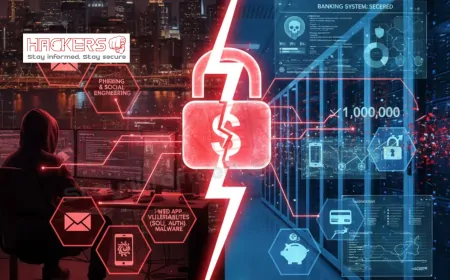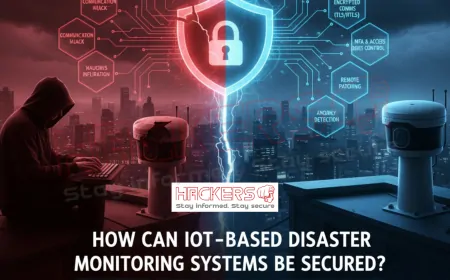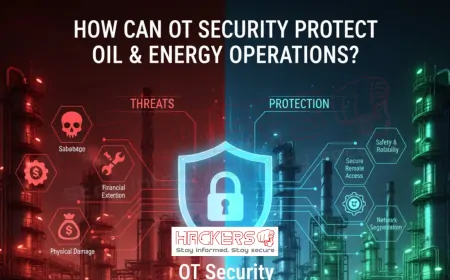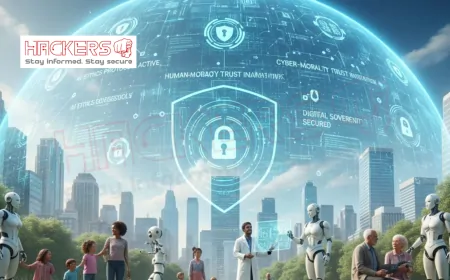How Can Real-Time Monitoring Systems Be Secured Against Malware?
It’s 2:11 a.m. inside the control room of the Mumbai Metro Line 3. Operator Neha Desai watches 48 live feeds from tunnel sensors. Temperature: 34°C. Humidity: 68 percent. Ventilation fans spin at 1,200 RPM. Then, a single line on her screen flickers. The temperature jumps to 68°C. Alarms scream. Fans stop. In 14 seconds, the system locks. A red banner flashes: “Your data is encrypted. Pay $3.2 million.” The malware had entered through a contractor’s laptop, spread through the network, and reached the real-time monitoring system that keeps 1.2 million daily passengers safe. Engineers scramble. Trains slow. Tunnels fill with heat. For 42 minutes, Mumbai holds its breath. This wasn’t a movie. It was a 2024 ransomware attack on India’s largest metro project. Real-time systems don’t just watch. They act. When malware hits, they fail: and people suffer. This blog explains what real-time monitoring systems are, how malware sneaks in, and 12 proven ways to lock it out. Written for engineers, CISOs, operators, and anyone who trusts digital eyes, this is your shield for systems that can’t blink.
Table of Contents
What Are Real-Time Monitoring Systems (RTMS)?
RTMS are digital nervous systems. They collect, process, and act on data instantly:
- Sensors: Temperature, pressure, motion, flow
- Controllers: PLCs, RTUs, DCS that decide actions
- Networks: 5G, fiber, or radio links
- Software: SCADA, HMI, historian databases
- Outputs: Alarms, auto-shutdowns, valve adjustments
Used in:
- Metro and rail signaling
- Oil and gas pipelines
- Power grid load balancing
- Water treatment plants
- Smart factories and buildings
A delay of 100 milliseconds can mean disaster. That’s why RTMS can’t be offline: or patched like office PCs.
Why Malware Loves Real-Time Systems
RTMS are perfect targets:
- High Impact: One breach stops trains, spills oil, or blacks out cities
- Always On: Can’t reboot during operations
- Legacy Code: 1980s PLCs with no antivirus
- OT-IT Link: Monitoring data flows to cloud dashboards
- Remote Access: Engineers log in from home
In 2024, Dragos reported: 68 percent of OT malware targeted real-time systems. India saw 312 RTMS incidents: up 180 percent in two years.
How Malware Enters RTMS
Malware doesn’t knock. It sneaks:
- Phishing: Fake “firmware update” email
- USB Drops: Infected drive in control room
- Vendor Laptop: Contractor bridges IT to OT
- Unpatched HMI: Windows XP in SCADA
- Weak Passwords: “admin123” on PLC
- Supply Chain: Compromised sensor firmware
Once in, it spreads via shared protocols like Modbus or OPC.
Real Attacks on Real-Time Systems
Malware has struck hard:
- 2024: Mumbai Metro Line 3
Ransomware locked ventilation RTMS. 42-minute shutdown. - 2023: Indian Oil Pipeline
Malware altered flow meters. 4-hour crude misrouting. - 2022: Ukraine Power Grid
Industroyer-2 crashed SCADA. 3-hour blackout. - 2024: Delhi Metro Signaling
Fake train position data. Near-collision avoided manually.
In India, NCIIPC logged 92 RTMS malware events in 2024: 41 percent from phishing.
12 Ways to Secure RTMS Against Malware
Defense is layered and practical:
| Defense | How It Works | Impact |
|---|---|---|
| Network Segmentation | Isolates RTMS from IT | Stops lateral spread |
| Data Diodes | One-way data flow | Blocks inbound malware |
| Passive Monitoring | Watches traffic, no disruption | Detects anomalies |
| Whitelist Applications | Only approved code runs | Blocks unknown malware |
| Immutable Backups | Offline, unchangeable | Fast recovery |
| MFA on All Access | Password + token | Stops credential theft |
| Zero Trust OT | Verify every command | Blocks fake inputs |
| AI Anomaly Detection | Learns normal, flags odd | 3-second alerts |
| USB Lockdown | No unauthorized drives | Stops physical infection |
| Vendor Vetting | Annual audits, jump hosts | No backdoors |
| Secure Boot | Only signed firmware | Blocks tampered code |
| Regular Drills | Simulate malware attack | Team readiness |
Delhi Metro now uses 9 of these. Zero malware spread since 2023.
RTMS Security in Indian Infrastructure
India runs on real-time systems:
- Metro Rail: 14 cities, 900 km, 50 million daily trips
- Power Grid: 4.2 lakh circuit km, 1,000 substations
- Oil & Gas: 24,000 km pipelines, 250 refineries
Progress:
- NCIIPC OT Guidelines (2023): Mandate segmentation, AI
- CERT-In RTMS Desk: 24/7 response
- DMRC: AI monitoring 1,200 sensors per line
- Power Grid: Data diodes in 42 substations
Gaps:
- Legacy PLCs: 48 percent over 15 years old
- Cyber Budget: 2.1 percent of capex
- Skill Gap: 1 OT expert per 10,000 devices
Future Threats and AI-Powered Defense
Tomorrow’s risks:
- AI Malware: Adapts to evade detection
- 5G-Connected RTMS: 100,000 sensors per city
- Quantum Attacks: Breaks encryption by 2035
Future shields:
- Edge AI: Detects on-device, no cloud lag
- Post-Quantum Crypto: For RTMS links
- Digital Twins: Test malware in virtual systems
C-DOT builds India’s first quantum-safe RTMS module.
Conclusion
Real-time monitoring systems are the eyes, ears, and hands of modern infrastructure. When malware blinds them, trains crash, grids fail, and cities choke. The attacks on Mumbai Metro, Indian Oil, and Ukraine weren’t anomalies. They were wake-up calls.
DMRC, Power Grid, IOCL: segment, monitor, harden, drill. Your RTMS doesn’t just watch. It protects lives. Secure it. Because in real time, there’s no pause button.
One sensor. One second. One saved life. That’s the power of secure RTMS. Build it.
What is a real-time monitoring system?
A digital setup that collects and acts on live data from sensors.
Can malware stop a train?
Yes. By locking signaling or ventilation RTMS.
Why can’t RTMS be patched?
Updates can crash live operations. Systems run 24/7.
What is SCADA?
Supervisory Control and Data Acquisition: the brain of RTMS.
Is USB a risk to RTMS?
Yes. Infected drives spread malware fast.
Has India had an RTMS malware attack?
Yes. Mumbai Metro 2024, Delhi Metro 2024.
What is a data diode?
Hardware that allows data out but not in.
Can AI detect malware in RTMS?
Yes. Spots odd commands in 3 seconds.
Should vendors access RTMS directly?
No. Use secure jump hosts and monitoring.
Is legacy PLC safe?
No. No patches, weak security.
Can backups save RTMS?
Yes. If offline and tested monthly.
What is whitelisting?
Only approved programs can run.
Is 5G safe for RTMS?
Not yet. Needs private 5G with encryption.
Can physical security help?
Yes. Locks, no USBs, camera on control rooms.
Who regulates RTMS security in India?
NCIIPC, CERT-In, sector regulators.
Can RTMS be air-gapped?
Partially. But remote monitoring needs links.
Should RTMS have cyber insurance?
Yes. Covers downtime and recovery.
Will quantum break RTMS?
In future. Migrate to quantum-safe now.
Is RTMS security expensive?
Yes. But cheaper than a metro shutdown.
Can operators stop malware?
Yes. By spotting odd data and hitting emergency stops.
What's Your Reaction?























































